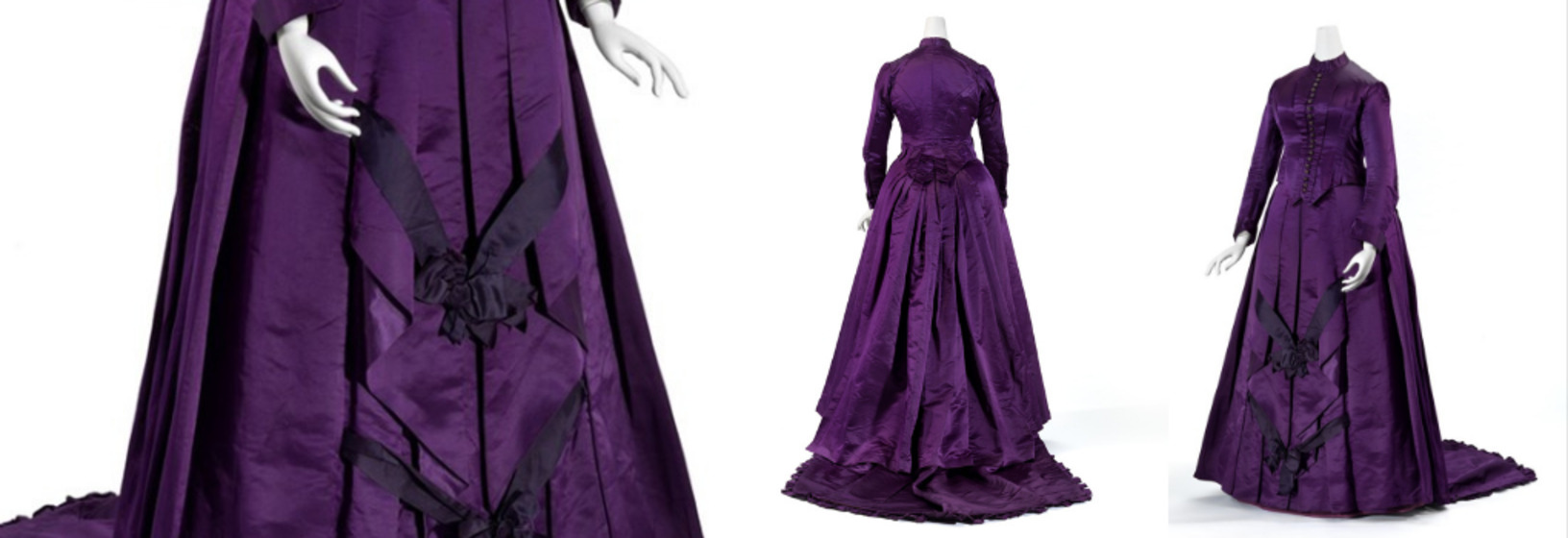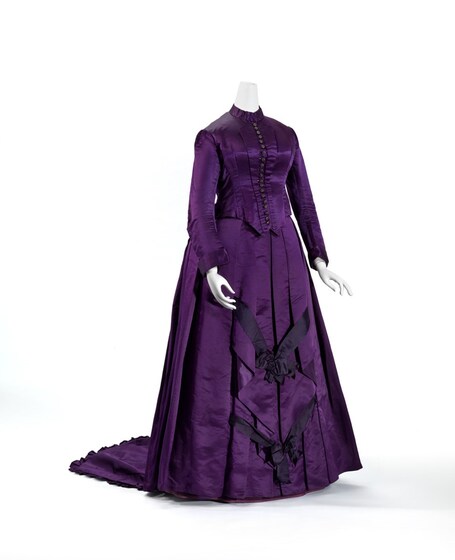Colour in fashion changed radically in the nineteenth century, following the accidental discovery of aniline purple (later named mauveine) in 1856 by 18 year-old Scottish chemist, William Perkin (1838–1907), while he was searching for a cure for malaria.
Applying a hypothesis developed by his mentor, Dr. August Hofmann, William began his synthesis of quinine using napthalidine a compound derived from naphtha, a solvent present in coal tar. Expecting a clear solution of colourless quinine, Perkin was surprised to see his experiment result in a reddish powder. Intrigued, he repeated the experiment using a slightly different constituent of naphtha, aniline. This resulting black product, when dried and dissolved in alcohol gave a mauve dye.
Perkin’s find was the catalyst for the emergence of a low-cost, artificial dyestuffs industry, which produced colours that rapidly replaced traditional dyes made from plants and insects. By 1859, English newspapers such as Punch were satirising the extent to which William Perkin’s vivid shade of purple, was dominating fashionable dress, likening it to a case of measles.
But what exactly did this colour look like? Although a small swatch of silk dyed with a batch of the original dye is housed in the Imperial College chemistry archives, London, and an image of this can be seen on Wikipedia, records of mauveine are scant and identifying the colour by the naked eye is an impossible task.
As such, prior to the exhibition, fibre samples from each of the four dresses were analysed by Dr. Jeff Church of the CSIRO using thin layer chromatography and surface-enhanced Raman spectroscopy. While no mauveine was detected, we did discover that Dress, c. 1865 was dyed with methyl violet, a dye synthesized from an aniline base in 1861 by chemist Charles Lauth, four years after the invention of mauveine.




